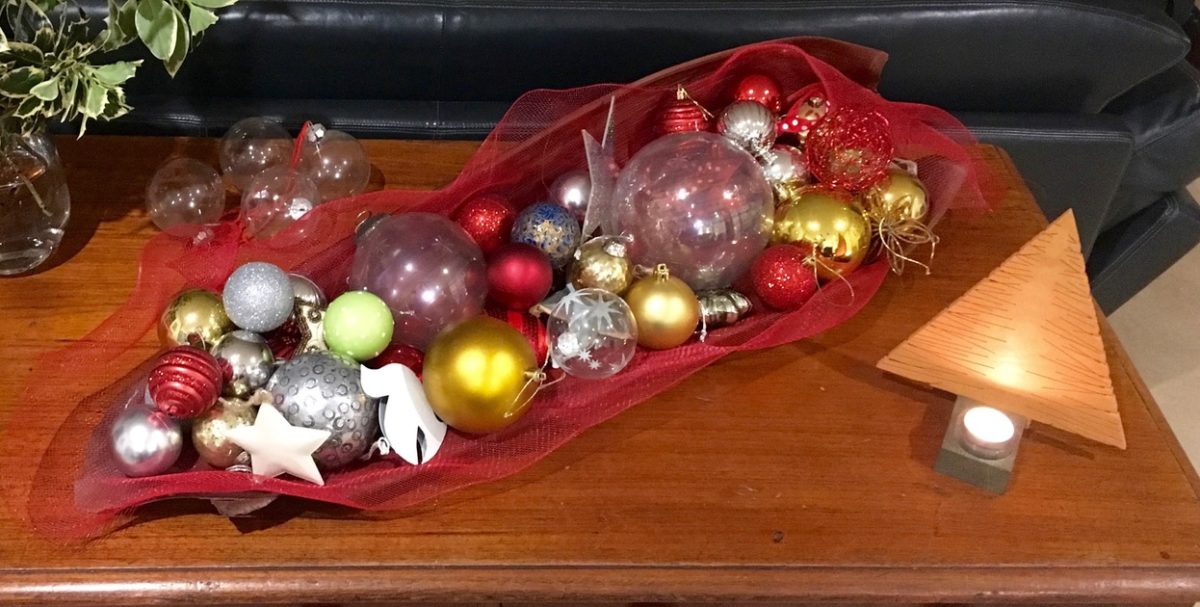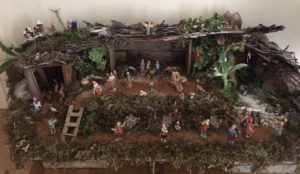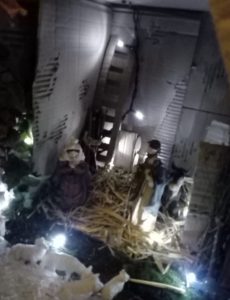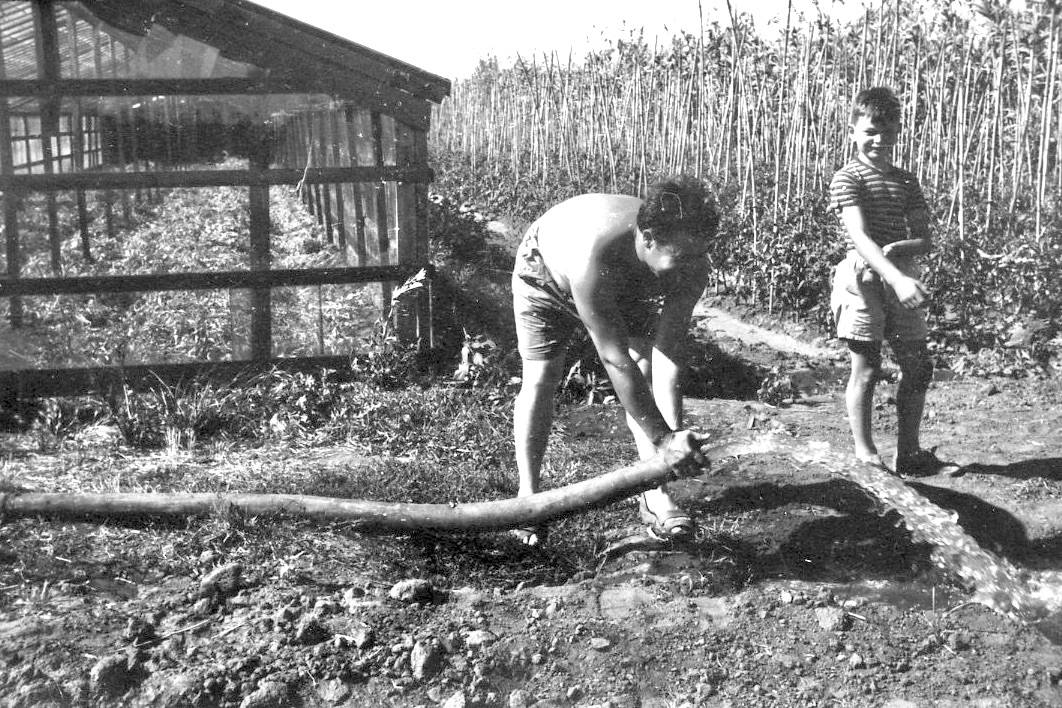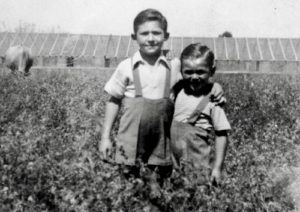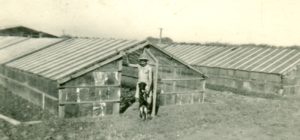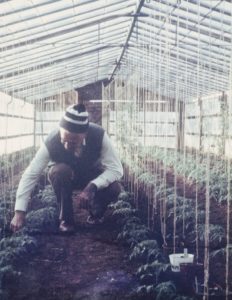The year is already underway but please accept my best wishes for 2020 – and for all that will unfold.
To start the blogs for the year, I thought it would be interesting to offer some excerpts from the oral history interviews about how the Veneto market gardener families celebrated the new year.
Anna Santin nee Mattiazzo, 17 April 2013
One of the family used to get the truck, and we used to put a tarpaulin on, on top, and we all used to get behind with a keg of beer, and something to eat and go around, St Kilda, mostly it was.
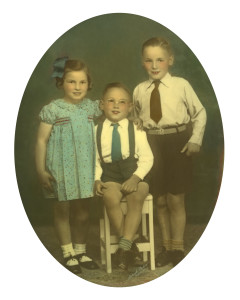
Lena Moscheni nee Rossetto 12 September 2014
I remember New Year’s Eve … or New Year’s Day I should say, we’d go around to people’s houses. It was bad luck if a girl went, it had to be a boy first, and we’d go to the people, Italians, and say, Buon anno! (Happy New Year!). And they used to give us 20 cents or 10 cents, just like that, but the boys had to go first and I had to come last, because I was a girl.
Bruno Piovesan, 4 October 2008
… they used to go to St Kilda, which is just north of Adelaide, of course (laughs) but it felt like it was miles away at the time: that was a picnic time, once-a-year picnic time. Oh, yes, on the St Kilda beach. And they used to have motorbike races and different things. And they called it a ‘swimming pool’, but gee whiz, it was just a hole in the dirt, virtually. [laughs] They used to have their own way of having fun …
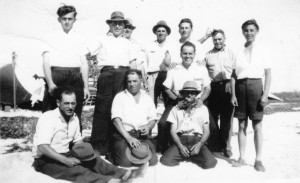
Front: Albino Berno; Narciso Ballestrin; Peter Berno (hands on shoulders of) Albino Laio
St Kilda Beach, mid 1940s
Christine Zampin, 26 February 2017
… and then we used to go to Saint Kilda every New Year’s Day in trucks. … Oh, all the men and the boys and kids used to go out and we used to get cockles and crabs and bring them back and then they’d light a fire and cook them up and eat them. And everyone used to bring food. Oh, it was fantastic! And every New Year’s Day, they had these games, down near the Saint Kilda hotel … for running and all that sort of thing, … Yeah it was really good fun. A lot of people used to go to those picnics down at Saint Kilda.
Noemi Campagnolo nee Zalunardo, 20 March 2014
I remember them going to St Kilda … People we knew, Tonellatos, … a lot of my relatives, like my zio Narciso. Lina, all the Zampins, they used to live on Angley Avenue in Findon … a lot of them that used to go, we used to have a truck full, follow the leader. It was good.
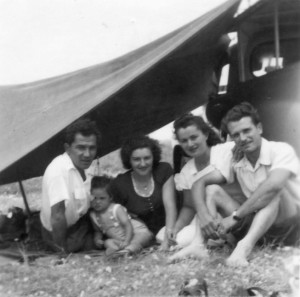
Diana Panazzolo nee Santin, 13 September 2013
I remember Bruno Piovesan, I think it was Frankie … Ballestrin, I don’t know if it was Nillo [Piovesan] and [Guido] Rebuli … I remember a New Year’s morning and they came to Mum and Dad’s bedroom window, they started knocking at the window and singing. [laughs] I remember waking up, “what was happening?” … that’s really, one of my happiest memories ….
Madeleine Regan
12 January 2020
L’anno nuovo
L’anno è appena cominciato! Accetate i miei migliori auguri per il 2020 – e per tutto quel che accadrà quest’anno.Per iniziare i blog per il 2020, ho pensato che sarebbe stato interessante offrire alcuni estratti dell’interviste orale storie di come le famiglie pioniere venete festeggiavano il Capodanno molti anni fa.
Anna Santin nata Mattiazzo, 17 April 2013
Una della famiglia prendeva il camion. Mettevamo un telone per sopra e andavamo con un barilotto di birra e roba da mangiare e si andava a St Kilda.

Lena Moscheni nata Rossetto, 12 September 2014
Ricordo la vigilia di Capodanno o il giorno del Capodanno … Andavamo a far visita agli amici. Portava sfortuna se una ragazza entrava prima quindi era sempre un ragazzo entrava prima. E andavamo a cercare le famiglie italiane augurando un buon anno e chiedendo una moneta di 10 o 20 centesimi. Ma i maschi dovevano essere i primi e io dovevo essere l’ultima perché ero una femmina.
Bruno Piovesan, 4 October 2008
Si andava a St Kilda, che si trova a nord di Adelaide, ovviamente, (ride) però allora sembrava che fosse miglie di distanza. Quella era la giornata del picnic, una volta all’anno picnic … alla spiaggia di St Kilda. Si facevano gare di motociclette e tante altre cose. E poi c’era una piscina, l’hanno definita una piscina, ma in realtà era solo un buco nella terra. (ride) Ognuno di noi aveva il proprio modo di divertirsi.

Front: Albino Berno; Narciso Ballestrin; Peter Berno (hands on shoulders of) Albino Laio
St Kilda Beach, mid 1940s
Christine Zampin, 26 February 2017
Andavamo a St Kilda il giorno di Capodanno col camion. Tutti gli uomini, i ragazzi, i bambini andavano a prendere le vongole ed i granchi. Si accendeva il fuoco e si cucinavano e si mangiavano. Tutti portavano roba da mangiare. O, era fantastico! Si giocava così vicino all’hotel St Kilda correndo e giocando. Era davvero divertente. C’era un sacco di gente che andava a fare il picnic a St Kilda.
Noemi Campagnolo nata Zalunardo, 20 March 2014
Mi ricordo che tanta gente che conoscevo andava a St Kilda … Tonellatos, tanti dei miei parenti, come zio Narciso, Lina … tutta la famiglia Zampini, vivevano in Angley Avenue a Findon. Si andava col camion pieno di gente e noi seguivano. Ci divertivamo tanto!

Diana Panazzolo nata Santin, 13 September 2013
Mi ricordo Bruno Piovesan, o penso che era Frankie Ballestrin. Non so se era Nillo o Rebuli … e mi ricordo il mattino di Capodanno e venivamo a bussare alla finestra della camera dei miei genitori ed stavano cantando. (ride) Mi chiedevo: “Che succede?” E quello era un mio carissimo ricordo …
Madeleine Regan
il 12 gennaio 2020

